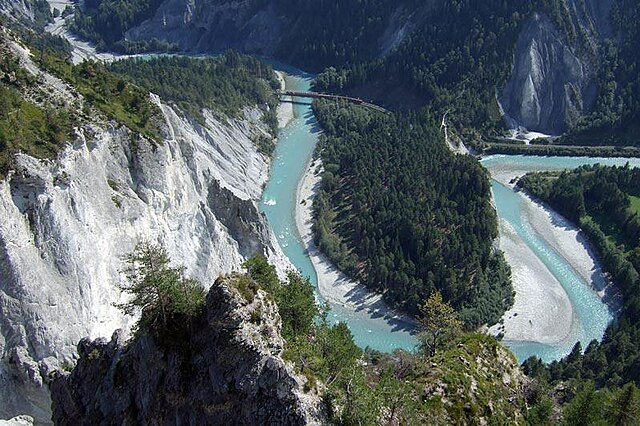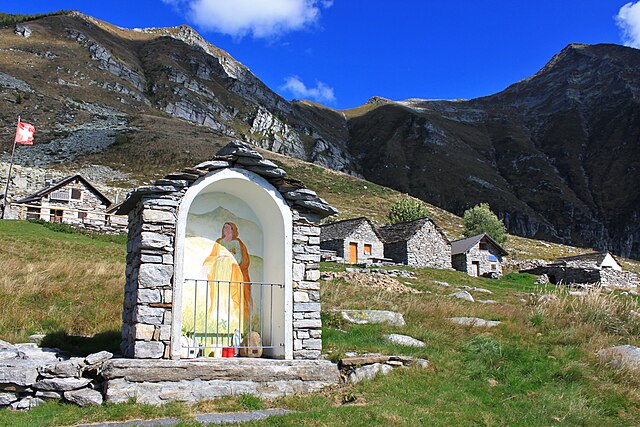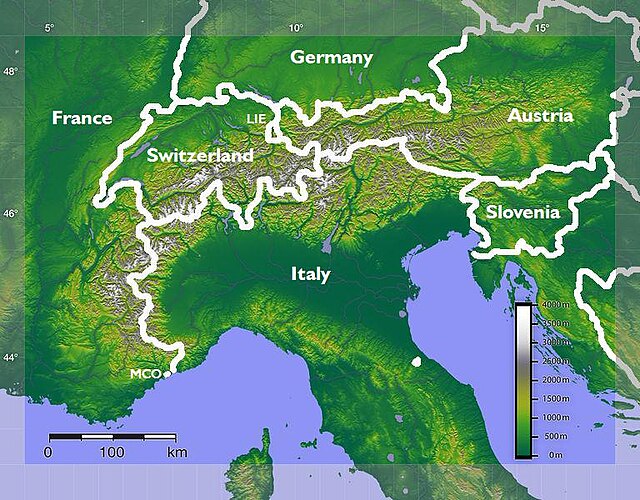The Alpine region of Switzerland, conventionally referred to as the Swiss Alps, represents a major natural feature of the country and is, along with the Swiss Plateau and the Swiss portion of the Jura Mountains, one of its three main physiographic regions. The Swiss Alps extend over both the Western Alps and the Eastern Alps, encompassing an area sometimes called Central Alps. While the northern ranges from the Bernese Alps to the Appenzell Alps are entirely in Switzerland, the southern ranges from the Mont Blanc massif to the Bernina massif are shared with other countries such as France, Italy, Austria and Liechtenstein.
Image of the Swiss Alps, covered in snow during the daytime.
Swiss Alps seen from the Swiss Jura in December 2010
Rhine Gorge in Graubünden
The Lac des Dix in Valais
The Alps are the highest and most extensive mountain range that is entirely in Europe, stretching approximately 1,200 km (750 mi) across eight Alpine countries : Monaco, France, Switzerland, Italy, Liechtenstein, Germany, Austria and Slovenia.
Satellite view of the Alps
The Dolomites (Italy) are a UNESCO World Heritage Site.
An "Alp" refers to a high elevation pasture frequented only in summer. It often includes several huts and small places of worship (here the Alpe Bardughè in Ticino).
The Alps extend in an arc from France in the south and west to Slovenia in the east, and from Monaco in the south to Germany in the north.








